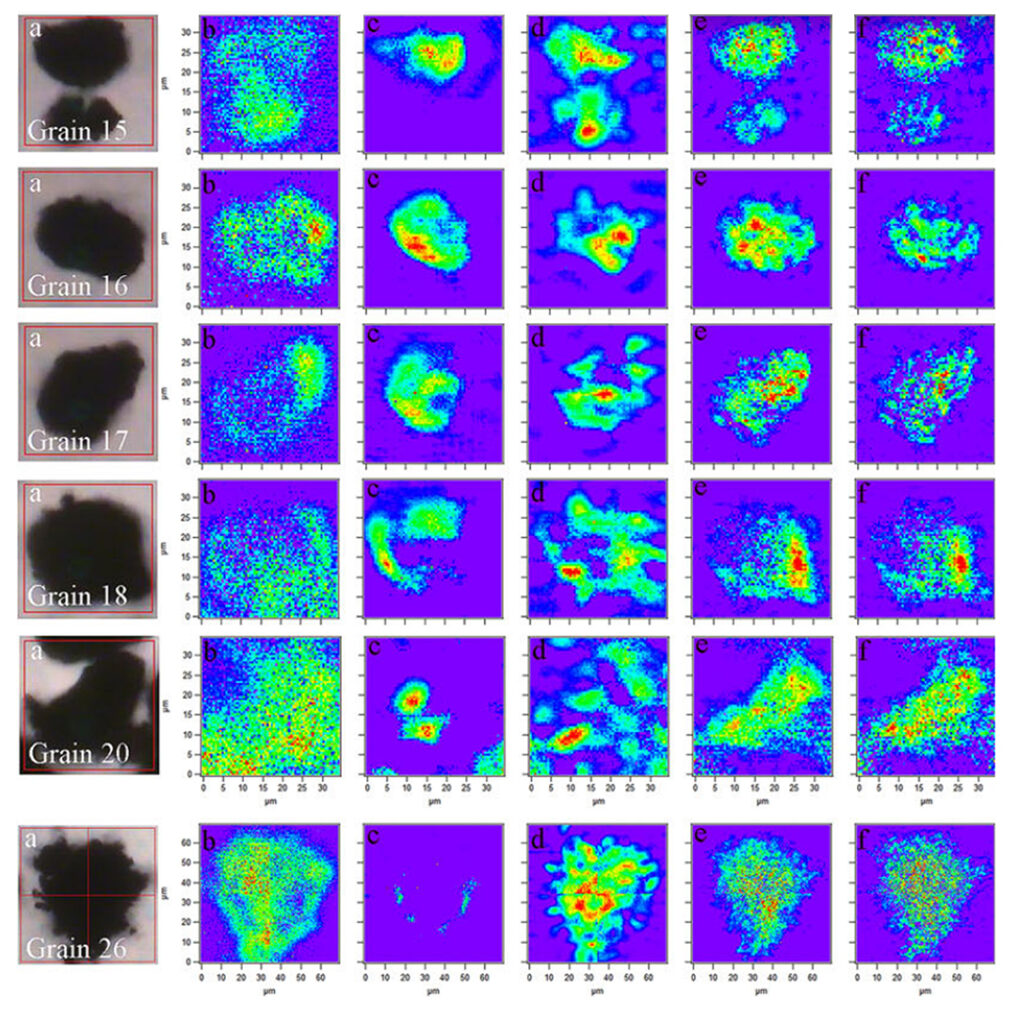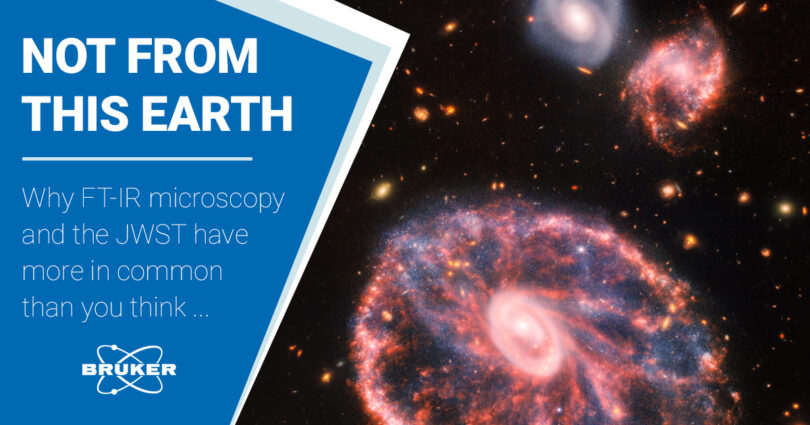Although it has only been active for a few days, the James Webb Space Telescope is already collecting spectacular extraterrestrial infrared images.

The images are only a small part of what the telescope has to offer. It also generates infrared spectra which can deliver important information about our solar system and galaxies far, far away. However, we do not have to go to outer space to examine the extraterrestrial by Infrared spectroscopy and imaging.
You don’t always have to look to the stars …
FT-IR spectroscopy can be used, for example, to determine the composition of meteorites and other extraterrestrial bodies – in space AND here on earth.
For example, it analyzes organic carbon in meteorites or help us broaden our knowledge about how water came to Earth. We bring space right to your lab bench, if you will, with our Bruker LUMOS II and HYPERION II FT-IR instruments

How did organic matter form in space?
A study by researchers from New York and Yokohama used synchrotron based FT-IR microscopy to investigate the Tagish Lake meteorite.1
In the paper, the spatial and spectral relationships between minerals and organic material were investigated. For this purpose, the researchers implemented our HYPERION 3000 coupled to a Vertex 70 FT-IR spectrometer. The authors were able to show a spatial association between aliphatic C-H and OH in phyllosilicates in the meteorites grains.
But what does this mean? In particular, the link between silicates and organic matter provides possible clues about the origin and evolution of organic material in meteorites and their parent bodies. In fact, the results may suggest that phyllosilicates:
- served as a reaction surface in the synthesis of organic matter or
- protected the organic matter against oxidation

This very exciting finding offers new and valuable insights into the history of our solar system and the evolution of organic matter.
Origin of water on Earth
Another intriguing question is: How did water come to Earth and other planets in our solar system? Probably „piggyback“ on the back of carbonaceous chondrite (CC)–like impactors.

But the mechanisms by which this water was captured have so far not been clarified. It is assumed, however, that it was stored in impact melts such as impact glasses. To shed light on the possible mechanisms behind this, scientists from the Brown University conducted hypervelocity impact experiments.2 They shot Antigorite projectiles onto anhydrous pumice targets to simulate the process of water delivery onto planets.
The reaction products were inter alia analyzed using Brukers LUMOS FT-IR microscope in transmission mode. FT-IR was used to determine the abundance and speciation of water. The absorbance bands near 3570 cm-1, 1630 cm-1 were used to determine total dissolved water as well as H2O dissolved as molecular water. The band near 4500 cm-1 was used to compute water dissolved as OH.

These exciting experiments show that CC-like projectiles delivered a considerable amount of 30% of their original water to silicate bodies.
Conclusion
The James Webb Telescope will provide us with many valuable insights and impressive images from deep space in the coming years. But to make groundbreaking discoveries in the field of space exploration, you can also stay on the ground.
References
(1) Yesiltas, M. and Kebukawa, Y. Associations of organic matter with minerals in Tagish Lake meteorite via high spatial resolution synchrotron-based FT-IR microspectroscopy. Meteoritics & Planetary Science. 584–595 (2016). doi: 10.1111/maps.12609
(2) Daly, T. and Schultz, P.H. The delivery of water by impacts from planetary
accretion to present. Sciences Advances. 4: eaar2632 (2018). doi: 10.1126/sciadv.aar2632








